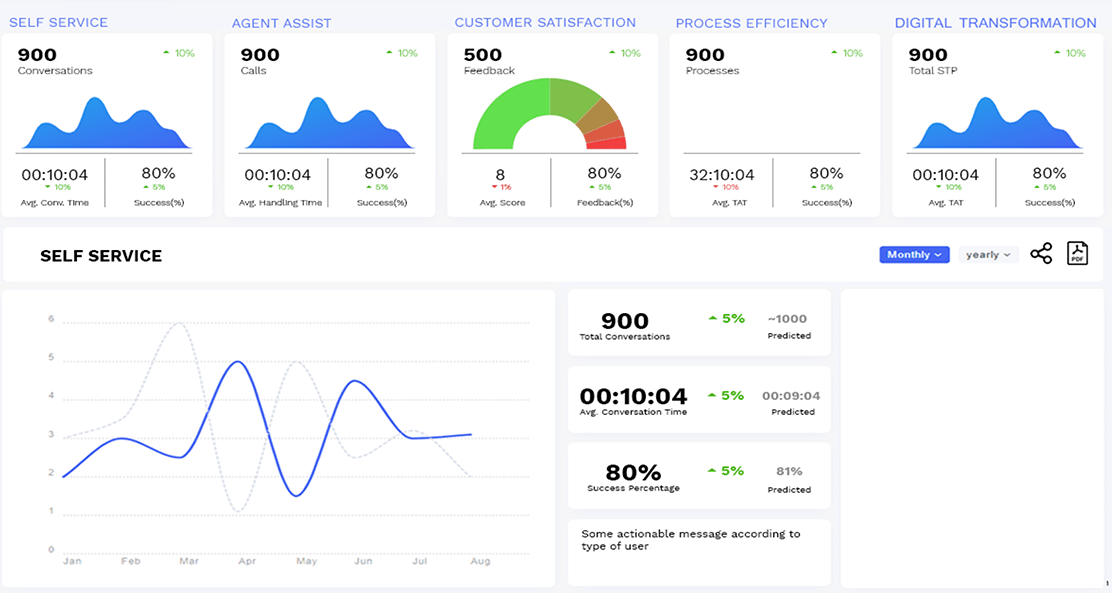Process Automation by definition is a process in which repeatable tasks are automated for standardization and mitigating for errors which creep in when tasks are repeated manually over long periods of time.
When a Business chooses to go in for Automation, they target a core set of metrics which impact their business and the Automation under reference targets to improve over a period of time. These metrics are the primary drivers for measuring the success of the Automation initiative and any solution or platform which is the means of the Automation under implementation ideally provide a real time view on these metrics from day zero.
Automation space have quite a few nomenclatures, but the below measures provide a comprehensive overview for measuring the success of an automation initiative.
Straight Through Processing (STP)
STP is the process path handled by the Automation Platform where all the tasks or steps in the life cycle of that particular process are automated. A high STP percentage equates to a highly efficient process implementation which has identified the paths available in the life cycle and provided an automated way to traverse them.
STP enables enhanced experience for the customers of the business as the outcome of a STP is a resolution and not just an acknowledgement or initiation.
STP is also a strong metric for measuring efficacy of the Digital Transformation (DX) either at an organisation level or at a function-process level.
Digital Process Automation solutions provide STP life cycles as their primary offering
Turn Around Time (TAT)
TAT is a measure for the total time spent in completion of the life cycle for a process. Low TATs point to highly efficient and standardized processes. A high TAT point to bottlenecks in the process or breakage in the STP flows. A high TAT leads to degraded customer experience, higher resource usage than budgeted for and as a metric is owned and tracked by the function owners with a view on operational efficiency.
Digital Process Automation solutions measure and highlight TAT as one of the primary metrics from a business perspective
Average Handle Time (AHT)
AHT measure the average time of the interaction of the users with the platform. AHT varies across domains, AHT in a call center would be the average time spent on the call by the agent with the customer similarly a chat bot will measure AHT as the time spent in the interaction by the customer on the chat window while a process automation platform will measure the total time spent by the customer within the life cycle of the process interacting with the platform.
A high AHT points to potential friction areas for the solution and a Digital Process Automation solution should work to reduce the metric for not just efficiency but also with a view to enhance customer experience
Case Pendency (CP)
Any Digital Transformation initiative is with a view to get rid of the bureaucratic way of doing things and the Case Pendency metric is the best way to measure how successful the initiative is in transforming the work culture of the organisation or function under question.
Automation platforms which measure pendency and its trends over a period of time provide timely insights to the business function regarding the before and after.
Just like zero Inbox is a thing for an individual mailbox, close to zero pendency is the target for a highly efficient and optimized business function
Net Promoter Score (NPS)
A Net Promoter Score is a valuable metric in Digital Transformation and should be enabled as a core measure by the processes being automated. The NPS measured for the process experience by the primary constituents of the automation namely the customers and internal users/employees of the automation solution provides a real time view on the success of the initiative. A high NPS for the process experience is an extrapolated outcome of the automation. A lower than baseline NPS will warn in advance the potential failure of the automation initiative.
Digital Process Automation Platforms which organically tie in the NPS metric with the process automation under question intrinsically improve the probability of the success.
Business measures are critical additive factors in bench marking of a Business Process Automation initiative and together with technical metrics play a larger role in success of such an initiative as compared to measuring just the technology measures such as Up time, Accuracy, Runtime etc.

At (https://automatapi.com/) we are building tools for Digital Process Automation which enable organisations big and small to re-imagine their business process landscape for maximizing operational efficiency and enhanced customer experience.

